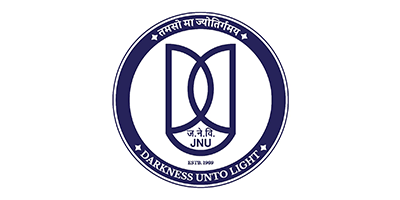Sewa as a Civilizational Pillar
Sewa has been in Bharatiya conscience since millennia, deeply woven into our civilizational identity. The term “Sewa” has no true substitute in other cultures of the world. In contemporary global parlance, the nearest approximation might be 'selfless service', but even that fails to encapsulate the full depth of its meaning. Sewa in the Bharatiya context is not just about helping or donating— it is an act born from empathy, spiritual duty, and social responsibility. It is inclusion in action, a lived commitment to collective well-being.
It is, in fact, the most lived expression of 'Vasudhaiva Kutumbakam'— the ancient Indian worldview that the entire world is one family. This sentiment is echoed through timeless prayers like “Sarve Bhavantu Sukhinah, Sarve Santu Niramayah” (May all be happy and healthy), reflecting the idea that happiness and health are not private matters but shared human concerns.
These values have not emerged recently— they have been a part of Bharat's collective way of life for thousands of years. Even in the ancient days of the Sindhu Ghati Sabhyata (Indus Valley Civilization), we find signs of well-planned, community-based living. The people seemed to care for each other, live in harmony, and build systems for shared water and sanitation— clear signs of a society rooted in cooperation.
As we move into the Vedic period, we encounter the idea of 'Rita', the cosmic order that brings balance and harmony to the world. This was not a religious commandment, but a natural law— teaching people to live in truth, uphold duty, and support one another. The Upanishads further enriched this idea with teachings like 'Tat Tvam Asi'— “You are that” — reminding us that every person is a reflection of the same universal soul.
Buddhism taught us Karuna (compassion) and Samata (equality). Gautama Buddha asked people not only to seek their own liberation but to work for the happiness and freedom of others. Jainism, through Ahimsa (non-violence), encouraged people to serve by being kind to all living beings— not just humans, but animals, insects, and even plants.
Each of these paths, while different in rituals and beliefs, shared one common thread: to serve others, to live in harmony, and to care for the world around us. This is what makes Dharma so special. It is not about belonging to a religion— it is about living a life of righteousness, balance, and responsibility.
Dharma is a flowing stream, in which many faiths and traditions have grown together. It gives us the space to practice our beliefs, but also teaches us to support others in their journey. Dharma is about growing together— through the right actions, through service, and through shared well-being.
Along with Samata, one more important element in the Bharatiya worldview is Samrasta— the spirit of harmony in diversity. Samrasta teaches us that even though we may come from different backgrounds, regions, or traditions, we can still live together as equals with mutual respect. Sewa, when practiced with Samrasta, becomes a unifying force. It removes bitterness, bridges social divides, and brings people together on the basis of shared humanity, not social labels.
In this way, Sewa is not just an act of giving— it is a natural part of living by Dharma. It helps us grow as individuals while helping others grow too. It is not confined to rules or institutions— it is open, kind, and inclusive, just like the spirit of Bharat itself.
Throughout Bharatiya history, sages and philosophers— from the rishis of the Vedic period to saints like Kabir, Chaitanya, and the Bhakti poets— have highlighted Sewa as a defining attribute of being truly human. In more recent centuries, this idea was carried forward by Swami Vivekananda, who proclaimed “Nar Sewa is Narayan Sewa” and envisioned Rashtra Nirman (nation-building) through awakened youth committed to spiritual strength and social service. His call for dynamic, selfless individuals was not just a religious appeal but a cultural and national revival.
Mahatma Gandhi, whose Ahimsa and Sarvodaya were forms of compassionate public life rooted in Sewa, also saw selfless service as essential for a free and just society.
Temporally and institutionally, this ethos of Sewa found powerful expression through socio-cultural organizations that translated ancient philosophy into action. Arya Samaj, founded by Swami Dayananda Saraswati, took up the cause of education, women's rights, rural upliftment, and social reform, particularly in eradicating untouchability and superstitions. It set up schools, Gurukuls, libraries, and healthcare centers, encouraging self-respect and rational inquiry rooted in Vedic wisdom. Its commitment to Rashtra Nirman was evident in its focus on building a strong, self-aware society through education and moral reform.
Similarly, the Ramakrishna Mission, inspired by the teachings of Sri Ramakrishna and established by Swami Vivekananda, built a robust network of sewa through schools, hospitals, disaster relief work, spiritual retreats, and youth programs. Its motto— "Atmano Mokshartham Jagat Hitaya Cha" (For one's own salvation and for the welfare of the world)— captured the essence of Sewa as both inward realization and outward action. The mission's work contributed to national consciousness and upliftment, embodying a subtle but firm vision of Rashtra Nirman rooted in spiritual service.
Building upon this foundation, the Rashtriya Swayamsevak Sangh (RSS) institutionalized Sewa through a decentralized, volunteer-driven, spiritually-rooted system of public service. Through its various affiliates and community-based initiatives, the RSS not only responded to emergencies but also engaged in long-term societal transformation with the explicit objective of Rashtra Nirman— building a strong, united, and self-reliant Bharat. These efforts span healthcare, tribal welfare, education, disaster relief, rural empowerment, and national integration, driven not by fame or funding, but by Dharma and a deep sense of responsibility towards the nation's destiny.
These organizations and movements aimed not merely to respond to crises but to awaken the society— to address not only the symptoms but also the root causes of suffering, ignorance, and exclusion through empowerment and conscious action.
Here lies the fundamental difference between Bharatiya models of service and colonial or missionary frameworks. Bharatiya Sewa integrates, it does not assimilate. It empowers without controlling, uplifts without converting, and heals without humiliating. It is both tangible and intangible. It serves not only through food, shelter, and education, but through the awakening of self-respect, identity, and spiritual consciousness.
In this sense, Sewa is not just a practice— it is the soul of Bharat.



